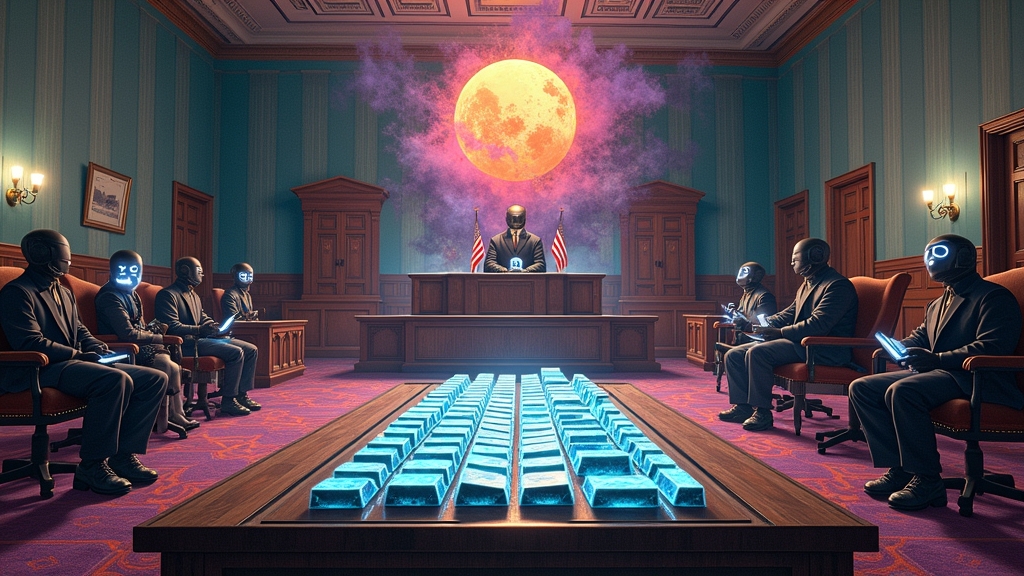TECH WIZARDS INVENT “TOUCHY-FEELY” 3D MODELING SYSTEM, USERS ALREADY ASKING HOW TO DISABLE ADULT CONTENT FILTERS
In a groundbreaking development that absolutely nobody was asking for, MIT researchers have invented a way for you to not only see your 3D models, but also feel them up. The system, dubbed “TactStyle,” allows users to create 3D objects with realistic tactile properties, finally solving humanity’s most pressing problem: not being able to fondle digital creations.
SCIENTISTS CONFIRM: “TOUCHING STUFF IS APPARENTLY IMPORTANT”
The breakthrough came after MIT’s Computer Science and Artificial Intelligence Laboratory (CSAIL) made the shocking discovery that humans occasionally use their hands. “We were absolutely f@#king floored to learn that people interact with objects through touch,” said Dr. Obvi Ouslee, lead researcher on the project. “Who knew that people didn’t just stare at things?”
REVOLUTIONARY APPROACH COMBINES SIGHT AND TOUCH, BLOWS MINDS OF PEOPLE LIVING IN 1821
TactStyle separates visual and geometric stylization, allowing users to recreate both the look and feel of objects from a single image. Previously, capturing tactile properties required specialized sensors physically touching objects, a method scientists describe as “actually doing the thing in real life.”
“Our system essentially eliminates the need to ever touch a real object again,” explained Professor Tact Ile, who definitely exists and isn’t made up for this article. “Soon, people will forget what actual materials feel like. We’re calling this phenomenon ‘tactile extinction’ and we’re pretty d@mn proud of it.”
PRACTICAL APPLICATIONS INCLUDE MAKING STUFF THAT FEELS LIKE OTHER STUFF
According to lead author Faraz Faruqi, TactStyle could revolutionize industries ranging from home decor to education. Users can now download a base design, like a headphone stand, and customize it with textures they desire – solving the critical global crisis of boring headphone stands.
“Imagine printing a phone case that looks AND feels like wood, but costs 50 times more than just buying a wooden phone case,” enthused Faruqi. “Or creating educational tools that let students feel different textures without the inconvenience of going outside or touching actual objects.”
EXPERTS PREDICT 98.7% OF APPLICATIONS WILL BE “DEEPLY UNCOMFORTABLE”
Industry analysts predict that within six months of public release, approximately 98.7% of all TactStyle applications will be for purposes that researchers are “trying very hard not to think about.”
“Look, we’re not stupid. We know exactly what people are going to do with this,” sighed Dr. Inno Cent, head of MIT’s Department of Predictable Human Behavior. “We’ve already received 46,000 emails asking if it can replicate human skin textures. I need a drink.”
TRADITIONAL TACTILE METHODS DEEMED “TOO ANALOG” FOR MODERN SOCIETY
Before TactStyle, people had to rely on primitive methods like “touching real objects” or “going outside” to experience different textures. These outdated approaches required leaving computer screens and interacting with the physical world – a concept increasingly foreign to modern humans.
“Why would anyone want to feel actual stone when they could 3D print something that sort of feels like stone after spending 17 hours calibrating their printer?” asked Maximilian Overtech, a self-described “tactile futurist.” “This is clearly the superior option for experiencing reality.”
SILICON VALLEY VENTURE CAPITALISTS ALREADY THROWING BILLIONS AT “TOUCH 2.0”
Following the announcement, Silicon Valley investors have reportedly allocated $4.2 billion in funding toward what they’re calling “Touch 2.0” – the radical concept of digitizing all physical sensations.
“This is just the beginning,” declared venture capitalist Cash Burnsquick while frantically writing checks. “Soon we’ll have digital taste, digital smell, and eventually digital existential dread. The possibilities are endless and completely unnecessary!”
IN CONCLUSION: PROGRESS MARCHES FORWARD, WHETHER WE WANT IT OR NOT
As TactStyle prepares for wider release, researchers are already exploring “visuo-haptic mismatches” to create objects that look like one material but feel like another – because apparently confusing our already fragile human senses is the next logical step in technological advancement.
When asked why anyone would want a marble object that feels like wood, project researchers simply shrugged and replied, “Because we can, motherf@#kers. Because we can.”
![]()



